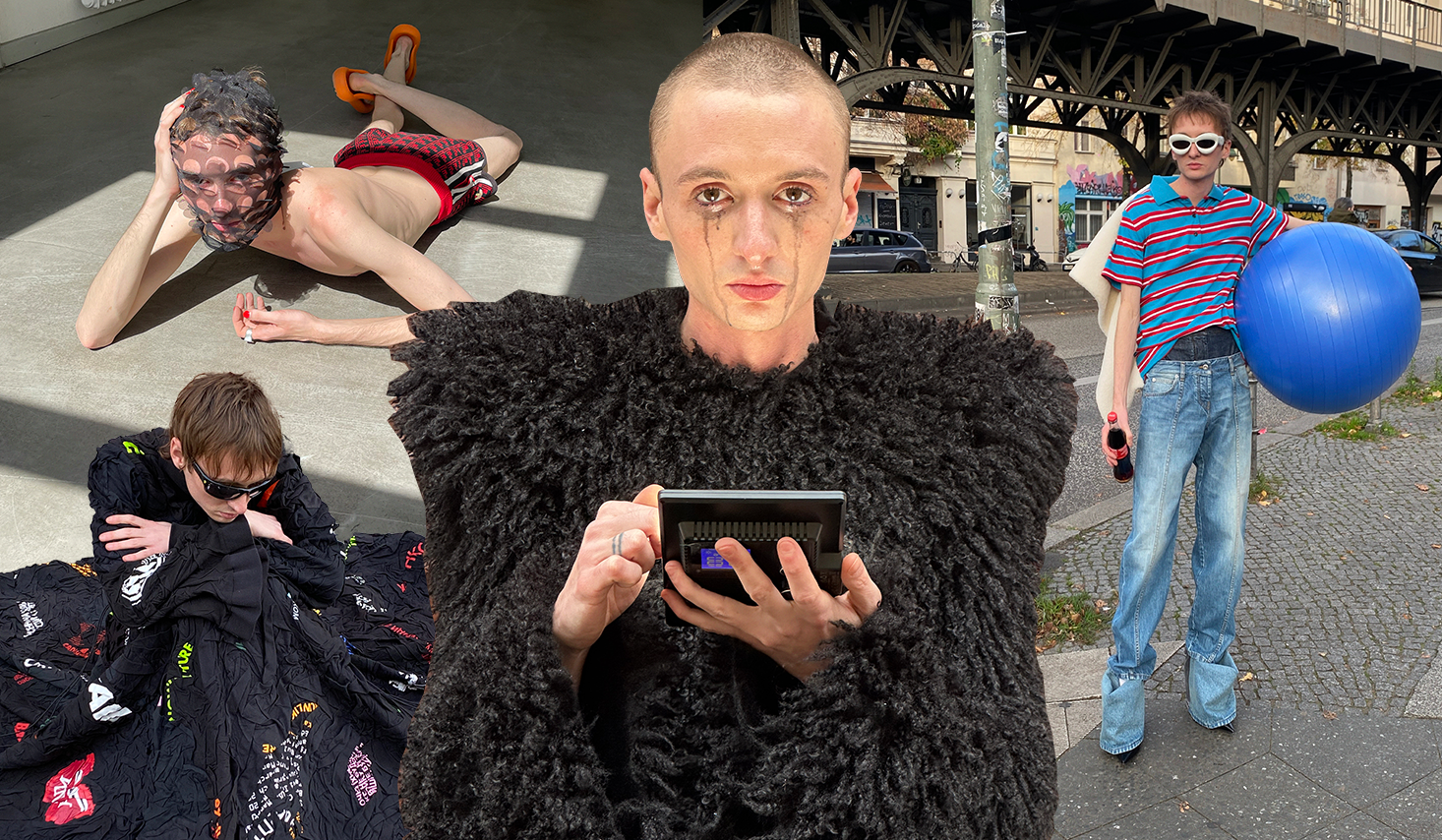
The rumours are true, you see a lot of unusual things on Berlin’s streets, like urban cow-riding, e-scooter tetris or flamboyant outfit checks. But when it comes to Javier de la Blanca and his way of dressing up, it’s more than just a fashion statement. It’s political and often questions the definition of what masculinity means today. “There is this rebellion inside me that doesn’t allow anyone to debate my existence,” says the Madrid-born artist, who takes self-expression to the next level.
If he’s not busy shooting content for fashion brands like Ottolinger or Camper, you’ll most likely find him crossing Kreuzberg’s streets on a bouncing ball or stepping out of a rubbish bag like a newborn fashionista. In fact, you never know his next move. “I want reality to interact with what’s in my head,” he explains his creative process, making strangers not only his audience but also part of his vision.
Here, he gets deep about Berlin’s LGBTQIA+ community, the ugly truth about the fashion industry, and how John Galliano himself kicked off his career.
Javier, let’s get to know you a bit better! Tell us a fun fact about yourself.
What people actually don’t know about me is that I went to Catholic school my whole life, even though no one is religious in my family. It was mostly about safety. I also never had to come out to my family because I’ve always loved to wear dresses and high heels. When I was around eight years old, I was walking in the neighbourhood with my mum, and she randomly stopped, held my hand and said, ‘Hey Javier, you know that mum and dad will love you no matter if you like boys or girls?’ That was even before I had my sexual awakening. Looking back, I feel pretty privileged about how I grew up, being quite open about my sexuality because of the people around me, who gave me a safer space.
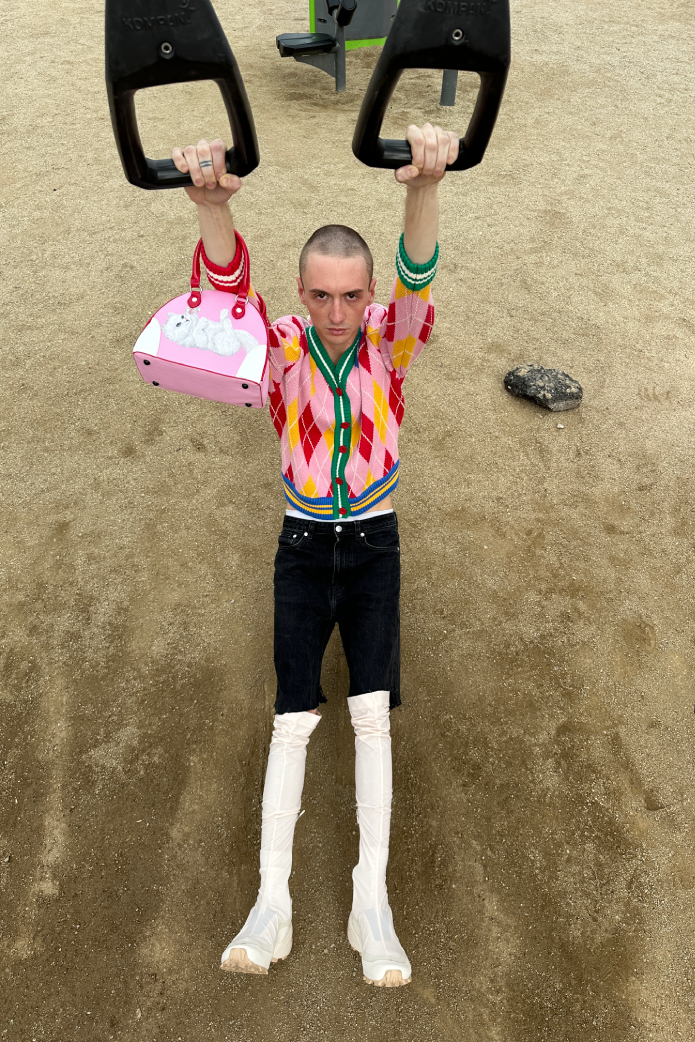
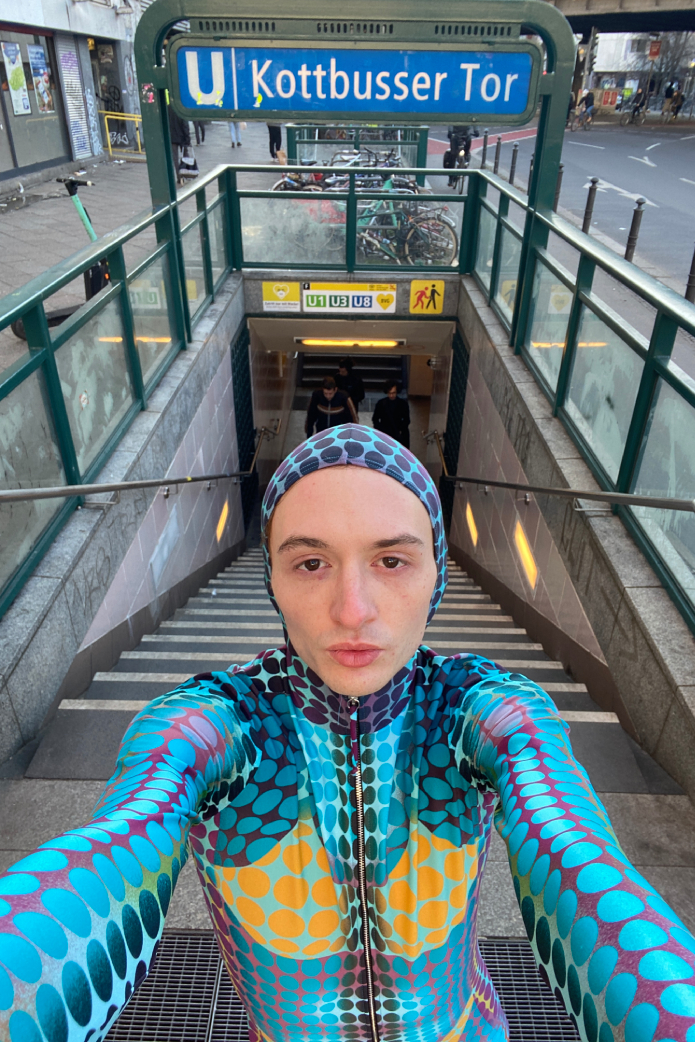
What’s your take on coming-outs? Do you feel like it’s an outdated concept?
Sadly, it’s not, as it depends on where you’re from and a lot of other different contexts. I never had a gay community around me until I started to study fashion and got into social media. My friends always pushed me to be whatever I wanted to be. At that time, I was already wearing skirts and never questioned anything because I was with the right people. There was this very iconic moment that happened at a random McDonald’s in Madrid. I was opening the door to the men’s toilet, and the cleaning staff shouted at me that this is not where I belong. I looked at him, pulled up my skirt, and showed him my dick. That’s when I started to understand that me occupying spaces is a political statement. There is this rebellion inside me that doesn’t allow anyone to debate my existence.
You’re also very rebellious in terms of fashion. How did this journey evolve?
When I finished my studies, the only thing I knew for sure was that I didn’t see myself designing clothes. For me, the journey is not about creating, but doing something with the things that already exist. After some horrible commercial experiences as a styling assistant, I found a Masters in creative direction, which is also the one I’m teaching now. At one point, I got obsessed with Martin Margiela and his concept of anti-fashion. This kind of counterculture spoke to me because I’ve always been the weird one. That’s when I realised there are different ways to be a misfit, and that you can have a community that understands your weirdness.
It must have felt like a full-circle moment when you became John Galliano’s muse, the creative director of Maison Margiela.
It was really random when I saw a DM from Alexis Roche, the long-time stylist and image director of Margiela a few years ago. They ended up booking me a hotel in Paris for a whole week, and I gasped when I was in the atelier and saw panels with my Instagram profile printed out from the first to the very last picture. Then John himself arrived and told me I was an inspiration for the SS19 collection and that he loved what I do. He started to play extremely loud Spanish music, and personally dressed me with the whole collection for four hours.
What an iconic moment! Have you always felt seen in the fashion industry?
Not at all. I was a joke. That’s the thing in the fashion world: until someone big gives you validation, you’re no one. I was always invited to the parties, but no one gave me a job. That was eight years ago, when being femme, queer, outspoken, kind and accessible was the most uncool combination in fashion – and dressed head to toe in HUMANA bargains. People didn’t get what I was doing on Instagram, either. It was hard to swallow for them.
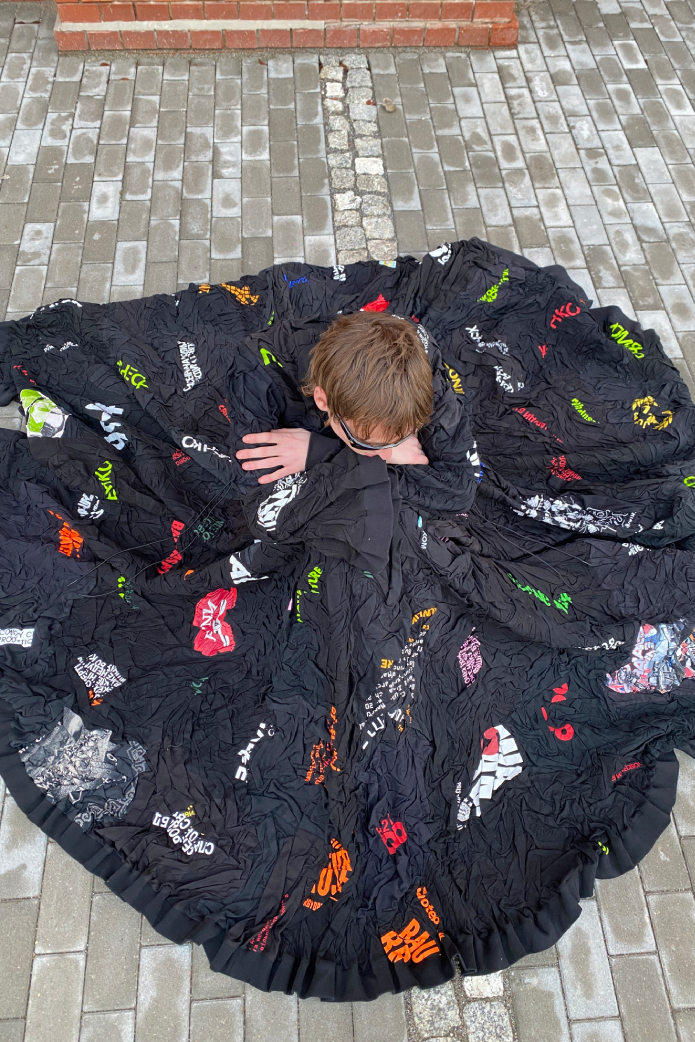
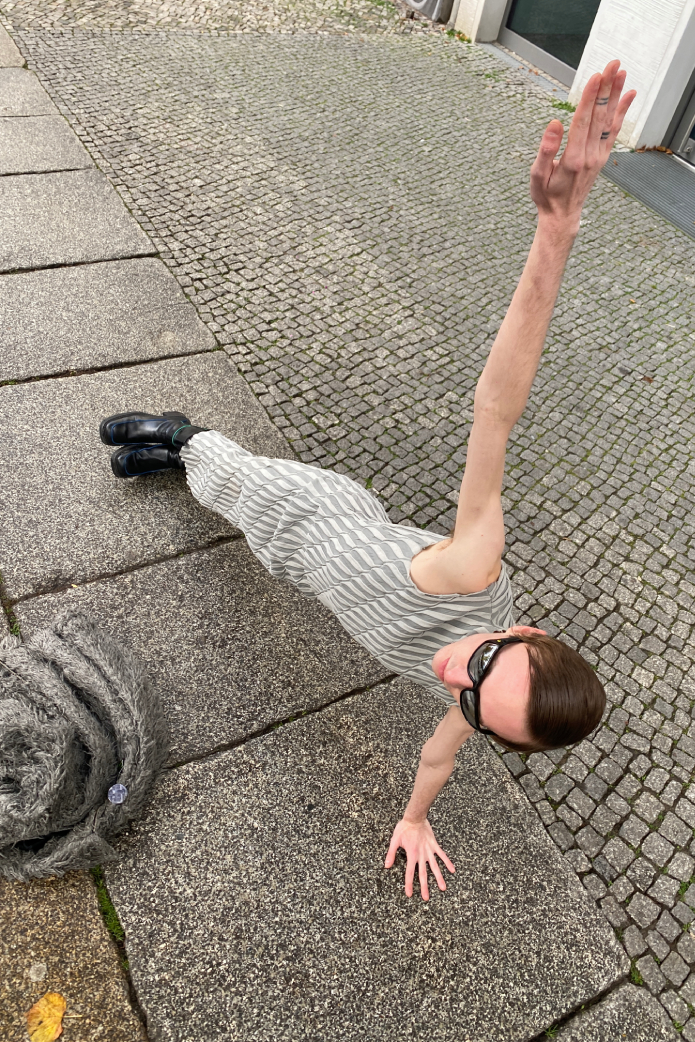
For some it feels more like a performance, but in fact it’s you putting yourself out there. Can you tell me a bit about your creative process? How do you come up with ideas?
It always starts with a narrative, a random and often completely absurd scenario before creating the actual look. What I want is reality to interact with what’s in my head. One of the rules I have is to never stop filming. You have to go on until I say “cut” because that’s where the magic happens. I have a very spontaneous way of working, which depends a lot on how I feel. Everything is always a way of expressing and finding peace inside myself. One of the other things is that I don’t want to be too obvious. I try to be like a painting with a small Instagram caption with room for interpretation. It’s funny, people are often shocked when they see me on the streets.
In a good or bad way?
Surprisingly, in a good way so far, especially in Berlin. People smile at me all the time. I guess, they got used to seeing the most random and crazy stuff here. Having someone film you also doesn’t allow people to be aggressive in any way, and I’m also never doing something against anyone. I did experience homophobic attacks in my daily life, but not in my character.
Berlin is often described as a safe haven for the LGBTQIA+ community. Do you agree with that?
Berlin is still the safest place to exist as a queer person. I have a lot of conversations with my friends who come to visit and are blown away by all these iconic, transgressive queer people when they go out, but where are they in daylight? The queer community here is often connected to nightlife and drugs. Of course, it’s easier for a queer person to exist high at 2 a.m. because there are amazing safer spaces in Berlin. Of course, I can wear a cute dress or a mini skirt to the party, but I’m wearing the same outfit at 12 p.m. when I buy my groceries. A lot of times I get asked about my pronouns, and I feel very comfortable with he/him because that’s my way of whatever it means to be a man. I can be a top wearing a skirt. It’s powerful to embrace your femininity.